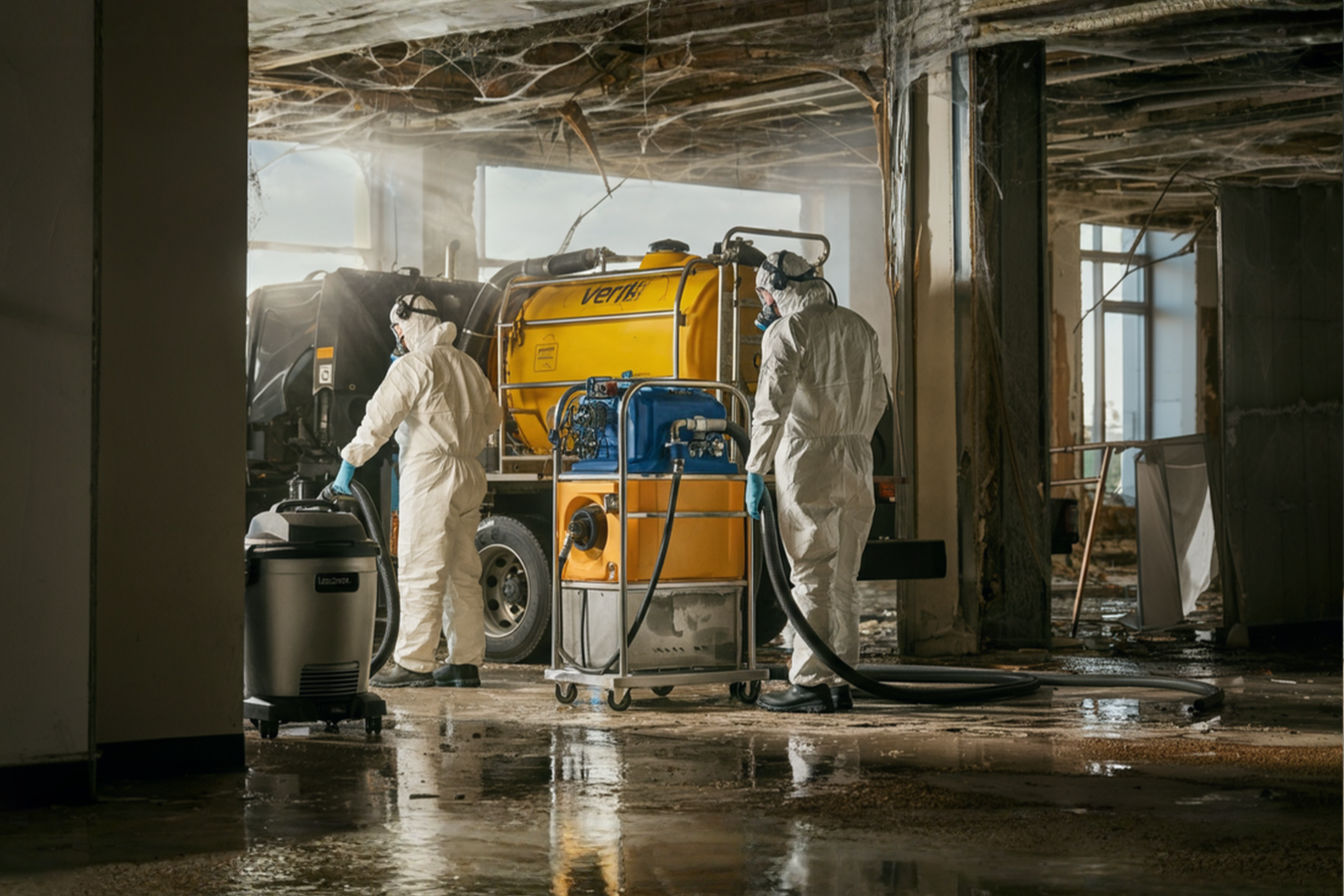Brush Roll Maintenance Devices: Specialized Tools for the Most Critical Component
Learn how specialized brush roll maintenance tools address the most common vacuum performance issues. This comprehensive guide covers everything from simple manual tools to advanced electronic systems.
This post may contain affiliate links. If you make a purchase through these links, we may earn a commission at no additional cost to you.
The humble brush roll—a seemingly simple rotating cylinder bristling with fibers—plays an outsized role in your vacuum’s cleaning power. This unassuming component serves as the mechanical heart of any vacuum cleaner, agitating carpet fibers and loosening embedded dirt that suction alone cannot remove. Despite its critical importance, the brush roll often receives inadequate attention until performance issues arise.
Proper maintenance of this vital component directly impacts cleaning efficiency, vacuum longevity, and even your home’s hygiene standards. When a brush roll becomes tangled with hair, clogged with debris, or suffers from mechanical wear, the entire vacuum system’s performance degrades significantly. This reduction in cleaning power often occurs gradually, causing many users to replace their vacuums prematurely when simple maintenance could restore optimal function.
The marketplace has responded to this need with an array of specialized brush roll maintenance devices designed to address specific challenges. These tools range from simple manual implements to sophisticated electronic systems that automate the maintenance process. Each offers unique advantages for keeping your vacuum’s most crucial component operating at peak performance.
This comprehensive guide explores the world of brush roll maintenance devices, helping you understand their importance, types, applications, and benefits. Whether you’re a homeowner seeking to extend your vacuum’s lifespan, a cleaning professional maintaining commercial equipment, or simply someone who values optimal cleaning performance, understanding these specialized tools will transform your approach to vacuum maintenance.
The Critical Nature of Brush Rolls in Vacuum Performance
The brush roll represents far more than just another vacuum component—it embodies the fundamental mechanical principle that revolutionized carpet cleaning. This rotating cylinder operates on a deceptively simple premise: physical agitation dramatically enhances dirt removal. Without this mechanical action, even powerful suction would leave significant debris trapped within carpet fibers.
The brush roll’s rotating motion creates several crucial cleaning actions simultaneously. It lifts carpet fibers, separates them momentarily, and creates pathways for embedded particles to be dislodged. This physical disruption breaks the static bonds holding dust particles to fibers and prepares them for removal via airflow. For hard floors, the sweeping action of soft brush rolls gathers debris into the suction path rather than scattering it.
The engineering behind effective brush rolls involves precise balance, optimal rotation speed, and appropriate bristle design. Too aggressive, and carpet fibers suffer excessive wear; too gentle, and cleaning effectiveness diminishes. This balance explains why vacuum manufacturers invest significant resources in brush roll design—it directly determines a vacuum’s real-world performance.
Vacuum performance issues frequently trace back to brush roll problems. When rotation slows or stops entirely, cleaning effectiveness plummets by up to 80% on carpeted surfaces. Even partial impairment through hair entanglement or debris buildup creates noticeable cleaning deficits. The distinctive sound change when a brush roll becomes impeded provides an audible warning of declining performance.
The brush roll’s influence extends beyond just cleaning power. This component affects filtration efficiency by properly preparing debris for suction, impacts energy consumption through its resistance and mechanical load, and even influences indoor air quality by determining how effectively allergens are removed from flooring. Understanding this component as the vacuum’s critical performance nexus explains why specialized maintenance tools have developed specifically for its care.
Common Brush Roll Maintenance Challenges
Brush rolls face unique maintenance challenges due to their mechanical nature and direct contact with floor debris. These issues develop progressively, often beginning with minor performance degradation before culminating in complete failure if left unaddressed.
Hair entanglement represents the most common and persistent brush roll maintenance challenge. Human and pet hair wraps around the rotating cylinder, gradually accumulating until it impedes movement and creates excessive friction. This friction increases motor strain, generates heat, and accelerates bearing wear. Even vacuums with “anti-tangle” designs eventually succumb to hair accumulation, particularly in households with long-haired occupants or pets.
The mechanical nature of brush rolls makes them magnets for string, thread, and fabric fibers. These materials create tight bindings around the roll’s circumference, often working between the bristles and the core cylinder. Their progressive accumulation creates uneven rotation and eventually forms dense bands that impact performance. The winding action of the roll itself exacerbates this problem, literally drawing in these problematic materials.
Debris buildup presents a different maintenance challenge. Sticky substances, fine dust, and fibrous materials adhere to bristles and fill the spaces between them. This buildup reduces the effective bristle length and dampens the agitation action. Additionally, accumulated debris increases rotational mass, forcing the motor to work harder and consume more energy for diminished results.
Bearing wear occurs naturally through extended use but accelerates dramatically with inadequate maintenance. The bearings supporting the brush roll experience increased friction when debris infiltrates their housing or when hair entanglement creates unbalanced rotation. The characteristic grinding noise of failing bearings signals advanced wear requiring prompt attention.
Belt issues frequently relate directly to brush roll condition. When a brush roll becomes obstructed, the drive belt experiences excessive friction, stretching and eventually snapping under the strain. Even before failure, stretched belts cause slippage that reduces rotational speed and cleaning effectiveness. This relationship means brush roll maintenance directly impacts belt longevity.
Several warning signs indicate brush roll maintenance needs: uneven cleaning performance, visible hair or string wrapped around the roll, unusual noises during operation, burning smells from excessive friction, reduced carpet grooming effect, and increased effort required to push the vacuum. Recognizing these early indicators allows for preventative maintenance before complete performance failure occurs.
Types of Brush Roll Maintenance Devices
The market offers diverse maintenance tools designed to address the unique challenges of brush roll care. These devices range from simple manual implements to sophisticated mechanical and electronic systems, each offering specific advantages for different maintenance scenarios.
Manual Cleaning Tools
Manual brush roll maintenance tools provide accessible, cost-effective solutions for routine maintenance. Their design focuses on addressing specific maintenance challenges without requiring power or complex mechanisms.
Specialized cutting tools feature unique blade configurations specifically designed for safely slicing through entangled hair and fibers without damaging bristles. Unlike household scissors, these tools typically incorporate safety edges, specialized hook designs, or protective guides that allow precise cutting while protecting the brush roll structure. The Brushtech Vacuum Brush Cleaner and Bissell Pet Hair Remover exemplify this category with their specialized blade geometries.
Seam rippers and precision scissors, while not exclusively designed for vacuum maintenance, offer effective options for targeted hair removal. Their slender profiles allow access between bristle rows, while their controlled cutting action prevents damage to the brush roll itself. These common household tools provide an entry point for brush roll maintenance without specialized equipment investment.
Debris extraction tools employ various designs to physically pull embedded materials from brush rolls. These include specialized picks, brushes with counter-directional bristles, and flexible combs designed to dislodge and extract debris without damaging the roll. The design of these tools often incorporates ergonomic handles and specialized tips suited for different debris types and brush roll configurations.
Bristle rejuvenation tools represent another manual maintenance category. These devices typically feature stiff-bristled brushes or textured surfaces designed to clean individual bristles on the brush roll, removing embedded dust and restoring their flexibility and effectiveness. Regular use of these tools prevents the gradual performance degradation associated with bristle contamination.
The advantages of manual tools include their affordability, simplicity, portability, and independence from power sources. Their limitations involve the physical effort required, potential difficulty with severely entangled materials, and the time investment for thorough maintenance. These tools prove particularly valuable for routine maintenance scenarios before severe entanglement occurs.
Mechanical Cleaning Devices
Mechanical brush roll maintenance devices employ moving parts or mechanical advantage to enhance cleaning effectiveness beyond what manual tools can achieve. These devices bridge the gap between simple hand tools and electronic systems.
Rotary brush roll cleaners utilize counter-rotating brushes or combs that spin against the direction of the brush roll’s normal rotation. This counter-action effectively loosens and removes entangled materials that resist manual extraction. Devices like the Dyson Brush Bar Cleaning Tool exemplify this category, using mechanical advantage to tackle more stubborn maintenance challenges.
Oscillating maintenance tools employ rapid back-and-forth motions to vibrate debris loose from between bristles. This mechanical action proves particularly effective for dislodging embedded particles and breaking the bonds of accumulated dust and debris that adhere to bristles through static electricity and physical compression.
Brush roll extraction systems combine mechanical action with removal mechanisms. These devices typically feature specially designed heads that fit over the brush roll, using mechanical action to loosen debris while simultaneously capturing it for disposal. This containment feature prevents the common issue of debris redistribution during cleaning.
Bearing maintenance tools focus specifically on the mechanical support system of the brush roll. These specialized devices allow for bearing lubrication, cleaning of bearing housings, and in some cases, bearing replacement without complete disassembly of the vacuum head. Their specialized nature makes them particularly valuable for extending the lifespan of higher-end vacuum systems.
The advantages of mechanical devices include enhanced effectiveness with difficult entanglements, reduced physical effort compared to manual tools, and more thorough cleaning action through mechanical advantage. Limitations typically include higher cost, larger storage requirements, and occasional maintenance needs for the devices themselves. These tools represent an intermediate investment that pays dividends through improved cleaning performance and extended vacuum lifespan.
Electronic Maintenance Systems
Electronic brush roll maintenance systems represent the technological frontier in vacuum care. These sophisticated devices incorporate powered mechanisms, sensors, and in some cases, automated functions to optimize maintenance effectiveness.
Self-cleaning brush roll technologies have emerged in premium vacuum models, integrating maintenance directly into the vacuum design. Systems like Shark’s Zero-M technology actively prevent hair wrap during normal operation, while others incorporate automated cleaning cycles that can be initiated after use. These integrated approaches shift maintenance from a reactive to a preventative model.
Motorized extraction tools provide electric-powered solutions for severe entanglement issues. These handheld devices feature motorized cutting and extraction mechanisms that can address even the most stubborn hair and fiber accumulation. The motorized action provides consistent power that reduces user fatigue and increases thoroughness compared to manual alternatives.
Diagnostic maintenance systems employ sensors to identify specific brush roll issues and guide targeted maintenance. These sophisticated tools can detect rotation impediments, bearing wear, and bristle effectiveness, allowing for data-driven maintenance decisions. While primarily found in commercial and industrial settings, this technology has begun appearing in high-end consumer models.
Ultrasonic cleaning systems represent an emerging technology in brush roll maintenance. These devices use high-frequency sound waves to create microscopic bubbles in a cleaning solution, which implode against surfaces to remove contaminants without mechanical action. This approach proves particularly effective for deep cleaning bristles without risking damage to the brush roll structure.
The advantages of electronic systems include superior effectiveness with minimal physical effort, time efficiency through automated or powered operation, and in some cases, preventative maintenance that reduces the need for corrective actions. Limitations include higher acquisition costs, power requirements, and increased complexity that may introduce additional failure points. These systems find particular value in commercial environments, households with multiple pets, or situations where physical limitations make manual maintenance challenging.
Professional vs. DIY Brush Roll Maintenance Tools
The distinction between professional-grade and DIY brush roll maintenance tools extends beyond mere price points. Understanding these differences helps users make informed decisions about appropriate maintenance investments based on their specific needs and circumstances.
Professional-grade maintenance tools offer several distinctive advantages over consumer alternatives. Their construction typically features higher-quality materials designed for durability through repeated use, precision-engineered components that provide more effective maintenance action, and design elements that accommodate a wider variety of brush roll types and configurations. These tools often incorporate features specifically requested by cleaning professionals based on field experience.
The investment in professional tools delivers tangible benefits in appropriate contexts. Commercial cleaning operations benefit from the durability that withstands daily use across multiple machines. Maintenance services achieve more consistent results through superior tool effectiveness. Facilities with extensive vacuum fleets realize cost savings through extended equipment lifespans and reduced replacement needs.
Consumer-grade options prioritize different values. Their design typically focuses on ease of use for non-specialists, affordability that makes routine maintenance accessible, and targeted functionality addressing the most common maintenance needs of typical household vacuums. While lacking the robust construction of professional tools, quality consumer options provide excellent value for standard household maintenance scenarios.
Several factors should influence the decision between professional and consumer maintenance tools. Usage frequency represents a primary consideration—daily maintenance across multiple units justifies professional investment, while monthly maintenance of a single household vacuum typically doesn’t. Vacuum quality also matters, as premium vacuums with higher replacement costs warrant more substantial maintenance investments. Specific brush roll challenges like pet hair from multiple shedding animals may justify professional tools even in household contexts.
The return on investment calculation for maintenance tools should consider several factors. Higher-quality tools typically last longer before requiring replacement, averaging 3-5 years for professional models compared to 1-2 years for consumer options under similar use conditions. Effectiveness differences mean professional tools often require less time to achieve comparable results, creating labor cost savings in commercial contexts. The vacuum replacement cost avoided through effective maintenance represents the most significant ROI factor, particularly for premium vacuum models.
Hybrid approaches often provide optimal solutions for many users. Investing in professional-quality versions of frequently used tools while selecting consumer options for specialized or occasional maintenance needs balances performance with cost-effectiveness. This strategic approach directs investment toward the maintenance actions that most significantly impact vacuum performance.
Step-by-Step Guide to Using Brush Roll Maintenance Devices
Effective use of brush roll maintenance tools requires proper technique and safety considerations. This systematic approach ensures optimal results regardless of the specific maintenance device selected.
Preparation Steps
Proper preparation creates the foundation for effective maintenance. Begin by completely disconnecting the vacuum from power sources, removing any batteries or unplugging the unit. This safety step prevents accidental activation during maintenance. For cordless models, removing the battery pack provides an additional safety margin.
Position the vacuum to allow full access to the brush roll, typically by carefully turning the unit over on a clean, stable surface. Many vacuums feature quick-release brush roll systems or access panels specifically designed for maintenance. Consult your vacuum’s manual to identify the appropriate access method for your specific model.
Adequate lighting proves essential for thorough maintenance. Position a bright light source to illuminate the brush roll completely, revealing entangled materials and debris that might otherwise remain hidden. A headlamp proves particularly valuable, keeping both hands free for maintenance work.
Gather appropriate disposal materials before beginning. Hair and debris removed during maintenance often contain fine dust that can redistribute if not properly contained. Having disposal bags ready prevents secondary cleaning needs after maintenance completion.
Safety Considerations
Safety during brush roll maintenance requires attention to several specific considerations. Always wear appropriate eye protection, as cut fibers and debris can unexpectedly release under tension. Some maintenance tasks benefit from thin work gloves that protect against sharp debris while maintaining tactile sensitivity.
For vacuums that cannot be fully disconnected from power sources, employ additional safeguards. Securing any power switches in the off position using tape or other temporary methods prevents accidental activation. When working with battery-powered units, removing the battery completely eliminates activation risk.
Maintain awareness of sharp edges on both maintenance tools and the vacuum itself. Some brush roll assemblies incorporate metal components with edges that can cause injury during maintenance. Similarly, cutting tools used for hair removal present obvious safety considerations requiring careful handling.
Consider allergic sensitivities when performing brush roll maintenance. The concentrated dust, dander, and debris released during maintenance can trigger reactions in sensitive individuals. Performing maintenance in well-ventilated areas and wearing a dust mask if necessary helps mitigate this risk.
Technique for Different Maintenance Tools
Manual cutting tools require a methodical approach for optimal effectiveness. Begin at one end of the brush roll, working systematically across its length rather than randomly addressing visible entanglements. Hold the cutting edge parallel to the brush roll axis when slicing through wrapped hair, minimizing the risk of bristle damage. After cutting, rotate the brush roll manually to verify full freedom of movement before proceeding to debris removal.
When using extraction tools, employ a consistent direction of movement that works with the natural lay of the bristles. This approach prevents bristle damage while maximizing debris removal. For stubborn embedded materials, a gentle twisting motion often proves more effective than increased force that risks damaging the brush roll structure.
Mechanical maintenance devices typically require proper positioning before activation. Ensure the device properly engages with the brush roll before applying power or mechanical action. Many devices specify a particular orientation or contact angle for optimal effectiveness. Following this guidance prevents both tool damage and inadequate maintenance results.
Electronic maintenance systems generally incorporate specific usage protocols established by the manufacturer. These may include cycle times, speed settings, or specific attachment methods. Adhering to these guidelines ensures both safe operation and maximum effectiveness. Deviating from recommended protocols may not only reduce effectiveness but potentially damage either the maintenance device or the brush roll itself.
Post-Maintenance Verification
After completing the maintenance process, thorough verification ensures proper restoration of functionality. Manually rotate the brush roll through several complete revolutions, feeling for any remaining resistance or irregular motion that might indicate incomplete maintenance. The rotation should feel smooth and consistent throughout.
Visually inspect the entire brush roll surface, bristles, and end caps. Effective maintenance should restore the brush roll to a visually clean condition with bristles free from visible debris and fibers. The bristles should stand upright rather than lying flat or appearing matted from embedded materials.
When reinstalling the brush roll, verify proper seating and engagement with the drive mechanism. Improper reinstallation represents a common cause of post-maintenance performance issues. Most vacuums produce an audible click or other indication when the brush roll correctly seats in its housing.
After reassembly, conduct a brief operational test focusing specifically on brush roll performance indicators. Listen for the characteristic sound of proper brush roll operation, observe the visible rotation (many vacuums include indicators or clear windows for this purpose), and verify normal resistance when moving the vacuum across carpeted surfaces.
Maintenance Schedule Recommendations
Establishing an appropriate maintenance schedule depends on several factors unique to each situation. Households with pets or long-haired occupants typically require more frequent maintenance, often benefiting from brief inspection and hair removal every 2-4 weeks. Standard household environments without these factors can often maintain optimal performance with attention every 8-12 weeks.
Commercial environments face different considerations. High-traffic applications may require weekly maintenance, while specialized environments like pet grooming facilities may need attention after each use. The specific flooring types encountered also influence maintenance frequency, with high-pile carpeting typically requiring more frequent attention than hard floors or low-pile commercial carpeting.
Performance-based scheduling offers an alternative to calendar-based approaches. This method initiates maintenance when specific indicators appear—unusual sounds during operation, visible hair accumulation at brush roll edges, noticeably reduced carpet agitation, or increased pushing effort. This responsive approach ensures maintenance occurs when actually needed rather than on an arbitrary schedule.
Extending Brush Roll Lifespan Through Preventative Maintenance
Beyond reactive maintenance addressing existing issues, preventative approaches significantly extend brush roll lifespan and maintain optimal performance between maintenance sessions.
Preventative measures begin with appropriate vacuum use techniques. Clearing floors of large debris and obvious hazards before vacuuming prevents object entanglement that can damage brush rolls. Avoiding vacuuming in areas with exposed threads, loose carpet fibers, or string prevents these materials from becoming entangled in the brush roll mechanism.
Regular inspection forms the cornerstone of preventative maintenance. Establishing a habit of briefly examining the brush roll after each use allows for quick removal of any accumulated hair or fibers before they create more significant problems. This routine inspection requires minimal time but prevents the progressive accumulation that leads to performance issues.
Brush roll cover maintenance often receives insufficient attention. The cover or guard that surrounds the brush roll collects debris over time, potentially impeding brush roll movement even when the roll itself remains clean. Regular cleaning of this cover, particularly along the edges where it meets the vacuum housing, prevents indirect performance degradation.
Environmental factors significantly impact brush roll longevity. Controlling humidity in storage areas prevents bristle deformation and bearing corrosion in stored vacuums. Avoiding chemical exposure from cleaning solutions on floors that might transfer to the brush roll during vacuuming preserves bristle integrity. Minimizing extended operation on abrasive surfaces reduces premature bristle wear.
Complementary maintenance practices support overall brush roll health. Regular filter maintenance ensures proper airflow through the system, reducing the strain on the brush roll motor. Belt inspection and replacement when needed prevents the increased friction and wear associated with slipping or stretched belts. Bearing lubrication according to manufacturer recommendations reduces mechanical resistance and extends bearing life.
The cumulative impact of preventative practices provides compelling value. Vacuums receiving consistent preventative maintenance typically experience 40-60% longer brush roll lifespans compared to those receiving only reactive maintenance. This extension directly translates to maintained cleaning effectiveness and delayed replacement costs, providing significant return on the minimal time investment required for preventative care.
Selecting the Right Brush Roll Maintenance Device for Your Needs
Choosing appropriate maintenance tools requires assessment of specific needs, vacuum types, usage patterns, and value considerations. This decision framework helps identify the optimal maintenance solution for each unique situation.
Assessment begins with identifying your specific maintenance challenges. Households with pets or long-haired occupants primarily face hair entanglement issues, making cutting and extraction tools most valuable. Environments with fine dust or debris accumulation benefit more from bristle-cleaning and rejuvenation tools. Commercial applications with multiple maintenance needs may require comprehensive tool kits addressing various maintenance scenarios.
Vacuum-specific considerations significantly impact tool selection. Residential vacuums typically feature standardized brush roll designs that work well with universal maintenance tools. Commercial models often incorporate specialized brush roll configurations requiring compatible maintenance devices. Robot vacuums present unique maintenance challenges due to their compact brush rolls and limited access, often necessitating specialized tools designed specifically for these units.
Budget considerations should balance initial investment against long-term value. Professional-quality tools typically command price premiums of 30-50% compared to consumer alternatives but often deliver 2-3 times the service life under similar use conditions. This extended lifespan, combined with superior effectiveness, frequently justifies the additional investment for users performing regular maintenance.
Multi-purpose tools offer advantages in certain contexts. Devices designed to address multiple maintenance needs reduce storage requirements and may provide cost advantages compared to separate specialized tools. However, their versatility sometimes comes at the cost of reduced effectiveness for specific tasks compared to dedicated tools. This trade-off proves acceptable for occasional maintenance needs but may frustrate users facing persistent specific issues.
Compatibility considerations extend beyond just physical fit. Tool materials should complement brush roll construction—metal tools may damage delicate bristles on some models, while plastic tools may lack effectiveness on densely constructed commercial brush rolls. Maintenance tool selection should consider both the current vacuum and any planned future purchases to maximize long-term utility.
The investment analysis for maintenance tools should consider both direct and indirect factors. Beyond the obvious comparison of tool cost versus new brush roll cost, consider the time value of more effective maintenance, the performance benefits of maintaining optimal cleaning effectiveness, and the extended lifespan of the entire vacuum system that results from proper brush roll care.
The Evolution of Brush Roll Maintenance Technology
The development of brush roll maintenance tools reflects broader technological evolution and growing recognition of this component’s critical importance to vacuum performance. This historical perspective provides context for current options while suggesting future directions.
Early vacuum designs treated brush rolls as consumable components rather than maintainable parts. The limited material technology of early brush rolls made them susceptible to rapid wear, with replacement considered the standard solution rather than maintenance. This approach persisted through much of the 20th century, with maintenance limited to basic cleaning rather than restorative measures.
The development of more durable brush roll materials in the 1980s and 1990s changed this paradigm. As brush rolls became more resilient, their primary failure mode shifted from bristle wear to performance degradation through entanglement and debris accumulation. This transition created the market opportunity for specialized maintenance tools addressing these specific challenges.
Recent innovations have focused on addressing the most common maintenance needs with greater effectiveness and convenience. Anti-tangle technologies employ various approaches including bristle design, cutting features integrated into the vacuum head, and self-cleaning mechanisms. These innovations reflect manufacturers’ recognition that brush roll maintenance significantly impacts customer satisfaction and perceived product quality.
Smart technology integration represents the leading edge of brush roll maintenance evolution. Modern premium vacuums increasingly incorporate sensors detecting brush roll performance metrics, automated maintenance systems that address issues without user intervention, and diagnostic capabilities that alert users to specific maintenance needs before performance visibly degrades.
Future trends suggest continued advancement in several areas. Automated maintenance will likely extend beyond premium models to mid-range vacuums as manufacturing costs decrease. Material science advances promise brush roll surfaces resistant to hair entanglement while maintaining effective cleaning action. Integration of maintenance systems with smart home platforms may enable scheduled maintenance based on actual usage patterns rather than calendar intervals.
The historical trajectory reveals a consistent pattern: brush roll maintenance has evolved from a specialized activity for cleaning professionals to an accessible practice for typical users. This democratization of maintenance capability has extended vacuum lifespans and improved performance across all market segments, representing a rare example of technological evolution benefiting both premium and value-oriented product categories.
Conclusion
The brush roll’s central role in vacuum performance makes its maintenance a uniquely high-leverage activity. A small investment in appropriate maintenance tools and regular attention yields disproportionate returns in cleaning effectiveness, appliance longevity, and overall satisfaction with your vacuum system.
The specialized tools explored in this guide address the specific challenges that brush rolls face—challenges that general cleaning cannot adequately resolve. From simple manual implements to sophisticated electronic systems, the range of available maintenance devices allows every user to find solutions appropriate for their specific needs, vacuum type, and maintenance preferences.
Implementing regular brush roll maintenance delivers multifaceted benefits. Beyond the obvious performance improvements, proper maintenance reduces energy consumption through decreased motor strain, extends the lifespan of multiple vacuum components beyond just the brush roll itself, and maintains cleaning effectiveness that would otherwise gradually diminish. These benefits compound over time, with consistent maintenance yielding greater returns than sporadic attention.
The future of vacuum design increasingly acknowledges brush roll maintenance as a core consideration rather than an afterthought. This shift benefits consumers through more maintainable designs, integrated maintenance features, and greater availability of specialized tools. As this evolution continues, the knowledge gained from understanding current maintenance approaches will remain relevant even as specific techniques evolve.
Ultimately, brush roll maintenance transcends simple appliance care—it represents an investment in your home’s cleanliness standard, your vacuum’s functional lifespan, and your satisfaction with a frequently used household tool. The specialized maintenance devices that facilitate this care transform a potentially frustrating chore into a straightforward process with immediately visible results and long-term benefits.







